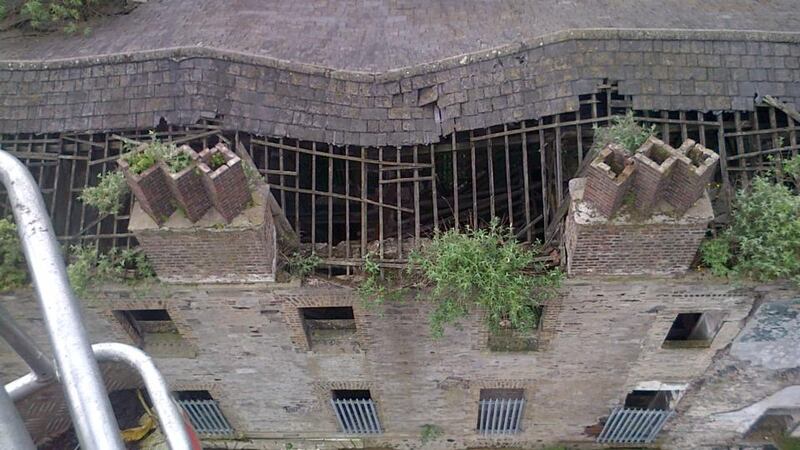The Richmond Asylum is the oldest surviving building on the site for the Dublin Institute of Technology campus at Grangegorman, Dublin. Built to designs by Francis Johnson in the early 19th century, the original building was a quadrangular complex with a three-storey over-basement central block, long wings to both sides and pavilions at either end.
It is built from Dublin calp limestone with granite details. It was named after Charles Lennox who was the duke of Richmond and lord lieutenant of Ireland from 1807-1813. The remnants of his coat of arms, designed by Richard Stewart in 1812, are still visible over the central entrance.
Officially opened in 1815, it was set up as a national asylum but was later renamed the Richmond District Lunatic Asylum with Dublin, Wicklow, Louth and Meath as its catchment area.

The site was developed in the 19th century for workhouses, asylums, prisons, hospitals and churches. Prior to that, it was part of Grangegorman manor. Latterly, it has been used as a film set – including when it doubled as the General Post Office in Neil Jordan's film, Michael Collins in 1996.
What state of dereliction is it in?
It is in a perilous state of dereliction with only the southern end of the building remaining standing. The linking arcades on the wings of the building are long gone. The roof has collapsed inwards. The windows have all been broken and are either boarded up or covered with gratings. It is surrounded by overgrown vegetation and in some places, there are trees rooted into the walls.
The building –which became part of St Brendan’s psychiatric hospital was vacated in the late 1980s. The west, east and north sides of the quadrangular building were demolished shortly afterwards. Further dereliction and vandalism led to the current parlous state.
What repairs have been carried out?
None to date but the Grangegorman Development Agency (GDA) has plans to stabilise the building in the near future.
Who is championing its cause?
Una Sugrue is a senior architect with the GDA in charge of the conservation projects on the Grangegorman site.
There are 11 protected structures on the site, of which the Richmond Asylum is the oldest. Stabilisation work has already begun on many of the others including the 19th century former Richmond penitentiary with its iconic clock tower.
“There are many buildings at risk in public ownership but it is very difficult to do things quickly even when the will is there,” explains Sugrue. She says, however, that there is an awareness of the inherent value of older buildings within universities. “There is an argument that heritage buildings enhance the quality of a campus and the reputation of a third-level college,” says Sugrue.
The Dublin City Council Grangegorman planning scheme states that "the Lower House (as the Richmond Asylum was renamed) is one of the most significant existing structures within the Grangegorman complex".
It further stipulates that “the relationship between any new development in the open lands south of this building should ensure that any new building should not overwhelm the historic building through their scale”.
What happens next?
Dublin City Council issued planning permission in July for stabilisation works to the building. “We propose to take off the roof completely, cap the external walls and stabilise the length of the building. We’d love to have it re-roofed straight away but we don’t have the money,” says Sugrue.
This work is due to begin later this year. The planning permission stipulated a further planning permission one year later for the “stabilisation and conservation including re-roofing and closing in all openings” with a timeframe for proposals for the reuse of the building. Sugrue says that in the longer term, DIT hopes the Richmond Asylum [to be renamed Francis Johnson House] will be restored fully and used as a pedestrian entrance to the campus – with access to the new cross-city Luas line.
There are plans to restore the original footprint of the building with the addition of a new building to the rear. Currently, the suggested use for this building is student accommodation and an incubation centre for start-up businesses. However, there are no funds available at this time for the restoration of the building for potential reuse and occupation. If you have information about an important building that has fallen into disrepair please email buildingsatrisk @irishtimes.com


















